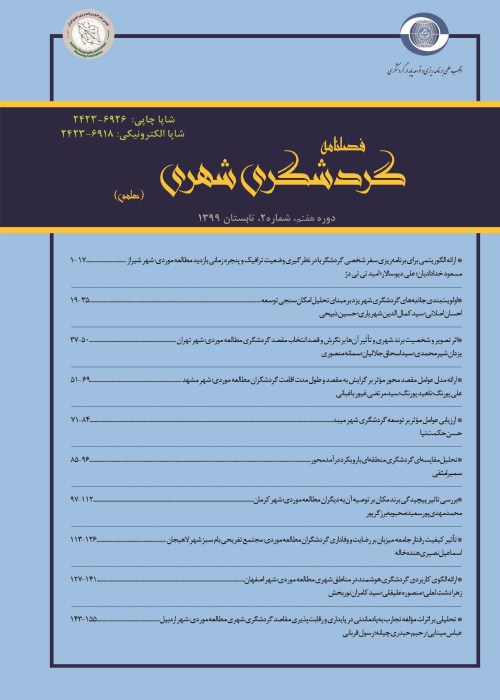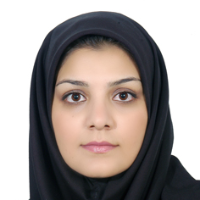Domestic tourism amidst the covid-19 pandemic: Investigating socio-demographics and travel purposes
The tourism industry is notoriously vulnerable to crises, and it has experienced a wide range of crises over time. However, the COVID-19 pandemic has marked the most serious crisis the industry has witnessed since 1950. As scholars explain, risk perception related to COVID-19 would affect consumers' preferences, leading to changes in their long-term behaviours. The Iranian tourism industry has been extensively damaged due to the pandemic. Although it is not clear when the pandemic can be controlled and life could return to pre-COVID-19 normalcy, the process of tourism demand recovery would require a clear understanding of consumers' transformed attitudes and perceptions and potential tourists' travel intentions. This study aims to investigate the impact of Iranian domestic tourists' socio-demographic characteristics on their travel intentions during the COVID-19 pandemic and the risk-related factors affecting it (perceived risk, risk aversion, and frequency of past travel). Also, tourists' travel purposes are compared in the light of their socio-demographic characteristics. The study seeks to raise the awareness of tourism destination marketers of Iranian domestic tourists' behaviours during the pandemic. Socio-demographic characteristics and travel purposes are among the most common criteria for categorizing target markets and directly impacting travel behaviours. Presently, domestic tourism is regarded as the most important option for helping the tourism industry rebound. In the case of Iran, considering people's reduced purchasing power caused by economic outcomes of the pandemic and US-imposed sanctions, domestic tourism seems to be the primary option for tourists.
The data were collected from September 2020 to October 2020, after the second wave of the pandemic hit Iran. An online questionnaire was created to gather the data, and its link was distributed via social media. The questionnaire included socio-demographic characteristics of the respondents, travel intention (TI), frequency of past travel (FOP), travel purposes, perceived risk (PR), and risk aversion attitudes (ATT). A five-point Likert scale was used to measure the variables. The final sample included 363 respondents. The data were processed and analysed in SPSS 24.0 through descriptive statistics, t-tests, ANOVA, and regression analysis.
The findings confirmed gender-related differences in travel intentions, perceived risk, risk aversion attitudes, and frequency of past travel. Age was not significantly different in terms of travel intentions or perceived risk. However, different age groups expressed various views regarding risk aversion attitudes and frequency of past travel. Travel intentions and risk aversion attitudes showed different values in terms of income. The high-income participants had more negative attitudes about accepting risks and tended to travel more during the pandemic. The participants who described their income as below average expressed the least travel intentions. Frequency of past travel, risk aversion attitudes, and perceived risk showed significant differences in the participants' family life stages. The only variable that showed a significant difference concerning education level was travel intentions. People holding a high school diploma and below showed the least, whereas those having an Associate's or a Bachelor's degree expressed the highest degree of travel intentions. The results showed the significant impact of gender on the frequency of past travel, perceived risk, risk aversion attitudes, and travel intentions. Similarly, age significantly affected risk aversion attitudes and perceived risk, while the family life stage significantly affected the frequency of past travel and risk aversion attitudes. Income and education level did not affect any of the dependent variables. Comparing travel purposes during the COVID-19 pandemic based on socio-demographic characteristics revealed a significant difference in VFR and family life stage. Concerning pilgrimage, the males (with less perceived risk and more risk-taking tendencies) and married people without children showed the highest religious tourism purposes. With work-education travels, the participants with average income expressed the least, whereas those with high income reported the highest travel intentions. Furthermore, those who lived alone reported the highest rate of work-education purposes. However, those living with their spouse but without their children expressed the least tendency to travel. Those with a high school diploma and below expressed the least, whereas those with a Master's degree and Ph.D. reported the highest degree of such travel purpose.
Based on results, marketing messages must target females and address their concerns about themselves and family members while assuring them that specific strategies are used in the tourism supply chain and destinations to reduce COVID-19 infection. The highest frequency of past travel was observed in the 25-44 age group, whereas the 14-24 age group showed the least risk aversion attitudes. Marketing activities must primarily target young tourists to help shape post-COVID-19 tourism. As the findings revealed, marketing messages should communicate businesses' commitment to the health protection of elderly couples who travel independently. Strategies should be implemented in line with the needs of this age group, and medical or healthcare facilities should be offered to them in tourism destinations so that their perceptions of vulnerability and lack of environmental control can be reduced. Iran's domestic tourism target markets should be categorized by the three influential socio-demographic variables, namely gender, age, and family life stage. Messages and strategies compatible with each category should be designed by focusing on the needs of females, young tourists, and elderly couples. The findings, generally speaking, suggested that under COVID-19 conditions, marketers must foreground: (a) gender in the case of recreation tourism; (b) gender and family life stage in the case of religious tourism; (c) family life stage for VFR trips; and (d) income, family life stage, and education level for work-educational travels. For each case, marketers must formulate necessary strategies and communicate relevant messages.
Travel intention , risk , Domestic Tourism , Covid-19 , Iran
- حق عضویت دریافتی صرف حمایت از نشریات عضو و نگهداری، تکمیل و توسعه مگیران میشود.
- پرداخت حق اشتراک و دانلود مقالات اجازه بازنشر آن در سایر رسانههای چاپی و دیجیتال را به کاربر نمیدهد.




